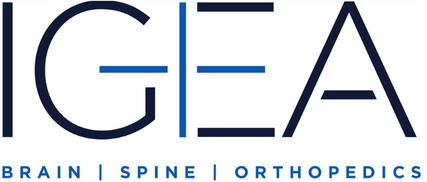NEUROENDOVASCULAR STENTING PROCEDURES IN NEW JERSEY & NEW YORK
If you have been diagnosed with a carotid stenosis or intracranial arterial stenosis, endovascular stenting may be the perfect solution. At IGEA Brain, Spine & Orthopedics, we use this minimally invasive tool to treat atherosclerosis of the vessels in the neck going to the brain, as well as the vessels of the brain themselves to provide relief to patients throughout the tri-state area of New Jersey, New York, and Connecticut. Act now to get treatment for your condition and start on the path toward recovery.
WHAT IS ENDOVASCULAR STENTING?
An endovascular stent is a type of metallic tube that re-expands blood vessels that have become smaller due to atherosclerosis or other disease. By inserting this tube into an abnormal blood vessel, surgeons can reinforce the area and allow blood to pass through more freely.
Traditionally, the only solution to blood vessel abnormalities such as atherosclerosis was open surgery. Endovascular stenting, however, presents a minimally invasive alternative. The stent can be inserted through a tiny incision that heals quickly with little risk of infection or other complications.
WHAT TO EXPECT?
Before the procedure, your physicians may run a few tests to make sure the surgery will be safe. You may also be asked to stop taking certain medications. Make sure you talk with your specialist about any other preparations you’ll need.
The procedure generally takes only two to three hours to complete and follows these steps:
1. You are given a sedative and/or anesthesia.
2. The surgeon makes small incisions in your groin or wrist.
3. Catheters are inserted into your blood vessels through the incision.
4. Using X-ray guidance, the surgeon feeds the stent through the catheter up toward the blood vessel.
5. Once in place, the stent opens to re-expand the blood vessel.
6. The delivery catheters are withdrawn and removed.
You may be required to spend a day or two in the hospital to ensure the stent is secure. Once you are discharged, you can expect full recovery to take about a month. Your doctor may give you a few restrictions in the meantime. For instance, you may be asked to avoid swimming or taking baths until the incisions have healed. You should also avoid driving for one to two weeks after the procedure or until you have stopped taking pain medication. Finally, don’t do any heavy lifting or intense physical exertion for up to six weeks or until you are completely healed.
WHO CAN BENEFIT?
Endovascular stenting is a procedure designed to treat stenosis in the arteries of the neck and brain to prevent stroke. Some common signs of stroke are explained by the acronym “FAST.” They include:
- Facial numbness or weakness
- Arm numbness or weakness
- This includes leg numbness or weakness as well
- Speech difficulty
- Time to call 911
- If you or a loved one experience any of these symptoms, call 911 immediately and be evaluated by a trained healthcare provider
EXPERIENCE OUR QUALITY CARE
If you or a loved one has been diagnosed with a carotid artery disease or intracranial arterial stenosis, trust IGEA Brain, Spine, & Orthopedics to help. Serving the New Jersey, New York, and Connecticut tri-state area, our surgeons are experienced specialists in treating and correcting atherosclerosis with endovascular stenting and other minimally invasive procedures. Learn more about our specialties or schedule an appointment by contacting us today.

